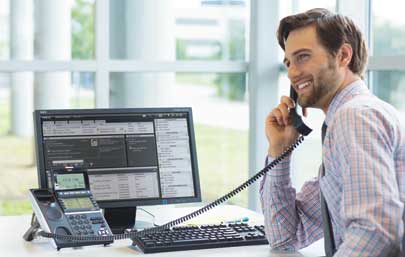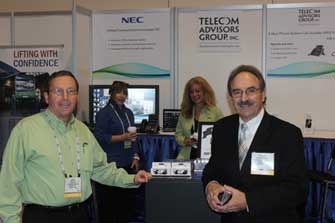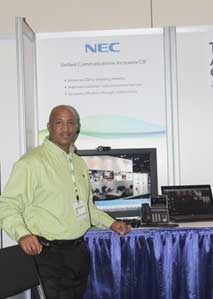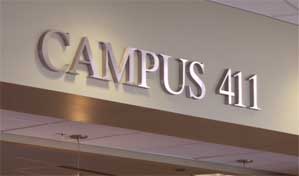 Tech professionals love their acronyms, and FCR—First Call Resolution in customer service industries and contact centers is no different. Lately, it seems every vertical industry has its vocabulary; with an acronym for every ideology, methodology, principle, and strategy. Most of these terms have been discussed to death—to the extent that it becomes difficult to get excited about the topic at all.
Tech professionals love their acronyms, and FCR—First Call Resolution in customer service industries and contact centers is no different. Lately, it seems every vertical industry has its vocabulary; with an acronym for every ideology, methodology, principle, and strategy. Most of these terms have been discussed to death—to the extent that it becomes difficult to get excited about the topic at all.
FCR is one of the acronyms we don’t see nearly enough of, though; which becomes evident when running a simple search for the term. In fact, search engines seem to return every generic name for FCR other than the one discussed here.
FCR is one of the five most important operational metrics in today’s contact centers and is also one of the key drivers of customer satisfaction. You would think that in a challenging economic environment, one that is increasingly focused on the importance of customer satisfaction in a word-of-mouth-equals-free-marketing-distribution kind of world, that the topic would be written about so extensively that it would dominate search engine results.
So why aren’t we talking about it?
Contacts vs. Calls
Customer relationship managers use FCR to mean two principles/metrics that are often used interchangeably—when they shouldn’t be. Is FCR first contact resolution or first call resolution? The answer to that question depends on your business’ individual needs.
First Contact Resolution incorporates the same principles as first call resolution—which is generally accepted to mean that a contact center agent addresses a customer's need the first time they call, thereby eliminating the need for the customer to follow up with a second call.
First Contact Resolution takes First Call a step further by tracking the contact’s behaviors and providing additional analytics and data based on their actions.
While purists might agree that First Contact Resolution is the better of the two metrics and most reflective of true customer experience, the reality is that purchasing the customer lifecycle tracking software needed to appropriately track the First Contact Resolution metric is often expensive and impractical.
Why impractical?
Well, for the answer, we must look at the Pareto Principle.
The 80/20 Rule
The Pareto Principle—also known as the 80/20 principle—is named after Italian economist Vilfredo Pareto. His theory, originally a socio-economic commentary on the distribution of wealth in early 20th century Italy, was adopted by business strategists in the 1940’s as an all-inclusive philosophy of the “vital few and the trivial many.”
In the context of the call center, this typically means that 80% of customer service calls/requests are coming from 20% of a given customer base.
So, taking the Pareto Principle into consideration means understanding that the customers who are on the phone with your contact center agents today, will likely be the same customers who are on the phone with your agents next week. Knowing this turns the immediate need for First Contact-level tracking into a lower-priority concern.
If you have the budget to spend on customer lifecycle management technology, then you should track that data.
But I’d rather focus on First Call Resolution, and how implementing sound practices with appropriate contact center technology makes it possible to improve this essential performance metric.
What the Statistics Say
Last year, WhitePages and the International Customer Management Institute (ICMI) performed a study of 542 contact center professionals titled “Using Big Data in the Contact Center.” The study found that 60 percent of contact center managers feel like they are unable to deliver actionable customer service information to agents due to data overload and a lack of focus on customer satisfaction. In addition, the survey found that:
- More than 40 percent of customer contact information is manually recorded by agents instead of fed through automated APIs or Web-based systems, which means reps are often not as connected to relevant customer data as they need to be to guarantee FCR.
- Half of call center agents feel hampered by productivity challenges such as having to ask customers for basic contact information.
- More than a third of contact centers do not collect any data around customer satisfaction, and 15 percent collect it but don’t use it at all.
While there are a great number of businesses continuing to operate with legacy call center equipment and ignore the importance of technology that helps achieve immediate customer satisfaction, today’s customers are becoming increasingly demanding. Customers are becoming more aggressive when comparing prices and are apt to switch their loyalty to your competition because of a poor customer service experience.
The study shows that without the right tools and guidance, agents are neither able to handle the volume of data that is in front of them, nor able to extract the vital pieces of information that they need to drive successful outcomes.
Everyone lately has experienced a terrible call or long hold time. In fact, the entire experience has created a small culture on Twitter that identifies with the hashtag #onholdwith.
Obsolete technology doesn’t give any business the extensibility it needs to answer customer complaints. When you consider that these same businesses are also becoming overwhelmed by data, one wonders whether or not first call resolution as a principle is also becoming obsolete and forgotten.
Keeping your customers in focus
Failure to resolve customer issues in the first call results in callbacks and increased total costs. If customers have to call back two or three times to resolve their issue, they may not call back ever again.
No matter how fast your company grows your customer service has to remain razor sharp. After all, the cost of acquiring a new customer is considerably greater than retaining an existing one. So how can you work aggressively to make sure that each interaction with your agents ends with resolution? By considering the following:
- Educate agents and get them involved: Educate your agents and then empower them to improve first call resolution-related processes. Your agents know customers and customer care probably better than anyone. Smart managers actively solicit suggestions and insight from their agents regarding how they may be able to enhance first call resolution performance. Given the opportunity, your call center agents will tell you what tools, training, and workflows are lacking and what processes and metrics are interfering with their ability to resolve customer issues effectively.
- Consult past records: Don't attempt to solve the problem without doing due diligence. Encourage your agents to review past interactions with their customers for clues and indications about why certain interactions resolve and others do not. Doing so will put your agents in a better place to remedy problems instantly.
- Install recording software: To get a sense of whether your agents resolve customer queries or escalate them, invest in call recording software which can record and archive every single interaction. Doing so gives your call center managers something to rely on to identify best-in-class behavior and zero in on patterns needing improvement.
- Optimize workforce management processes: Even the best trained and equipped agents on the planet can’t be successful if they’re over-worked. The same applies if the customer, who has been caged in a queue for 15 minutes, is screaming at them for taking too long when answering the phone. Accurate forecasting and sound scheduling is critical, as is mastering skills-based routing, so callers get sent to the right agent with the right skill set to handle a customer’s specific issue right there on the spot.
Solutions available to your business
Ultimately there is a high cost, in terms of inefficiencies and operational cost, when you continue to operate outdated technologies. Taking inventory of your existing call center technologies can help you determine if it’s time for an overhaul or a simple upgrade.
You don’t have to choose between favorite software and hardware. You can choose to invest in contact centers with automatic call distribution and attendant technologies so that calls coming into your contact center are routed correctly. Many of these technologies now include Unified Communications with presence technology, which can help you identify available subject matter experts instantly.
Check out our whitepaper for more information on Best (and Worst) Practices in Customer Communications.


 As many of you know, the National Automotive Dealers Association (NADA) is holding their annual conference in New Orleans, Louisiana this year. The conference is always the automotive industry event of the year, and if you are attending or have looked at the line-up of guest speakers and session topics, you’ll know 2014 is not disappointing.
As many of you know, the National Automotive Dealers Association (NADA) is holding their annual conference in New Orleans, Louisiana this year. The conference is always the automotive industry event of the year, and if you are attending or have looked at the line-up of guest speakers and session topics, you’ll know 2014 is not disappointing.
 In this post we’re summarizing customer service best (and worst) practices from a recent contact center white paper. Many organizations rely on call centers as an entry point for inbound customer communication. We’ve all been there, frustrated and trapped without the option to connect with a real human to resolve our problem. Yet as IT professionals, we all know that our customer service can either delight or frustrate our customers. In these examples I use the generic term “customers”, but the same holds true for other industries: Guests in
In this post we’re summarizing customer service best (and worst) practices from a recent contact center white paper. Many organizations rely on call centers as an entry point for inbound customer communication. We’ve all been there, frustrated and trapped without the option to connect with a real human to resolve our problem. Yet as IT professionals, we all know that our customer service can either delight or frustrate our customers. In these examples I use the generic term “customers”, but the same holds true for other industries: Guests in 








 We’ve all been that frustrated caller on hold waiting to speak to a “real” person who can address our concerns. While waiting, you’ve probably thought of all the ways your experience could be improved if they would just answer the one or two quick questions you wish to ask. While you can’t get any of your time back, the good news is, there are several contact center features that can minimize your customer’s frustration, and, as a result enhance their experience. It’s no secret that a consolidated,
We’ve all been that frustrated caller on hold waiting to speak to a “real” person who can address our concerns. While waiting, you’ve probably thought of all the ways your experience could be improved if they would just answer the one or two quick questions you wish to ask. While you can’t get any of your time back, the good news is, there are several contact center features that can minimize your customer’s frustration, and, as a result enhance their experience. It’s no secret that a consolidated,  Traditional contact centers: you know, the ones where rows of agents wearing headsets process large volumes of calls? While they’re extremely functional in certain venues, they do not have much of a place in Higher Education. Higher Education is a channel where contact center technology should be used to improve the student experience, streamline administrative processes, increase sales for bookstores and ticket offices, support fund raising campaigns, and enhance the college or university as a whole. To accomplish these goals, contact centers in higher education have a unique profile that influences both practices and communications architecture.
Traditional contact centers: you know, the ones where rows of agents wearing headsets process large volumes of calls? While they’re extremely functional in certain venues, they do not have much of a place in Higher Education. Higher Education is a channel where contact center technology should be used to improve the student experience, streamline administrative processes, increase sales for bookstores and ticket offices, support fund raising campaigns, and enhance the college or university as a whole. To accomplish these goals, contact centers in higher education have a unique profile that influences both practices and communications architecture.
